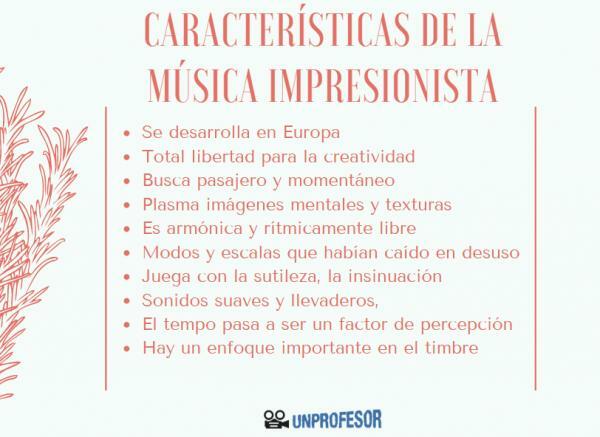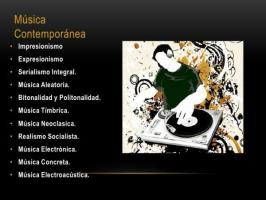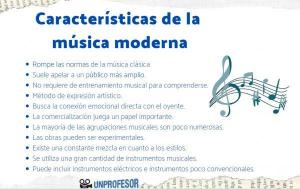Characteristics of impressionist music
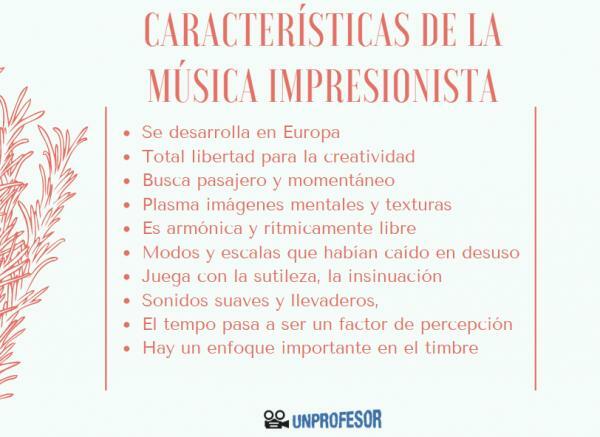
As the ages progress we notice how the people of each period develop their thoughts and their way of life. If one thing is true, it is that art is not just a hobby or a form of entertainment, but also a reflection of the ideology and context of each moment in history. It is through the music of the Renaissance, Baroque, Romanticism and Impressionism that we manage to get closer to the wishes of expression of people in the past. In this lesson from a TEACHER we will talk about one of these ideologies from bygone ages, with the characteristics of impressionist music, a current of great expressive freedom of art during the nineteenth century.
The Impressionism born as a general artistic trend in France in the 19th century, between the years 1860 to 1910 approximately and emerged not only as a genre in the musical area but also in other arts such as painting, plastic arts and literature.
Some people are of the opinion that Impressionism as such is not a musical genre but only an extension of the ideology, yet it is used to name music with certain characteristics. Parallel to France, Impressionism had a boom in Spain with its respective composers.
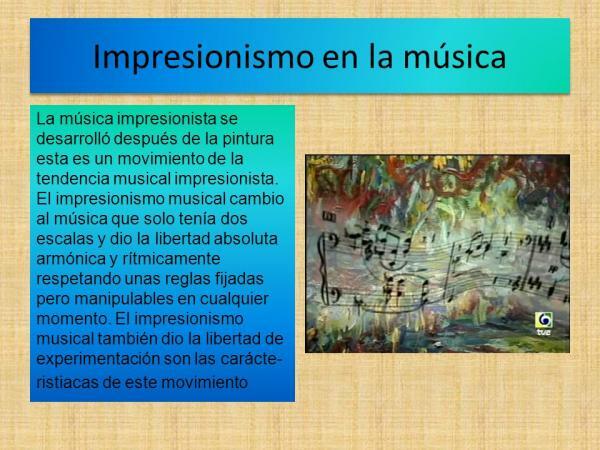
Image: Slideshare
We are going to discover the most outstanding characteristics of impressionist music so that, thus, you can better know what this musical style is like. Here you have them:
- It takes place in Europe, mainly in France and Spain.
- Impressionist music uses the total freedom for creativity.
- Impressionist ideology is based on capture the fleeting and momentary.
- It seeks to capture mental images, landscapes and textures.
- It is harmonically and rhythmically free. Although the tonality and the metric can be established at the beginning of the work, it is common that when developing they are manipulated.
- The use of modes and other scales that had fallen into disuse during previous times such as in the Baroque, a period in which only the major and minor scales used to be used.
- In Impressionism he plays a lot with subtlety, insinuation, so the sounds are usually soft and bearable, sometimes ambiguous.
- The tempo becomes a factor of perception, a lot of freedom is usually given to have quality "cantabile”(Of singable qualities) or rubato (when time spontaneously accelerates and decelerates according to the interpreter's taste).
- There is a lot experimentation with textures, sound combinations that may not have a solid definition but that together present an atmosphere.
- There is a major focus on the ringer, the use of musical properties is sought to beautify the sound itself.
